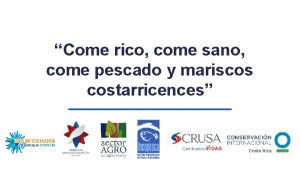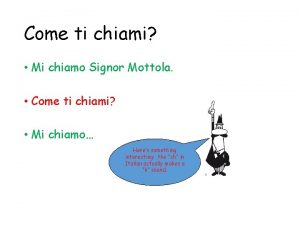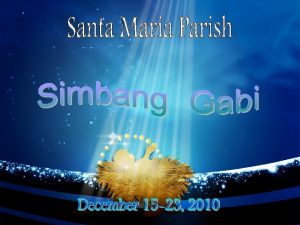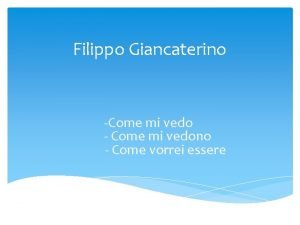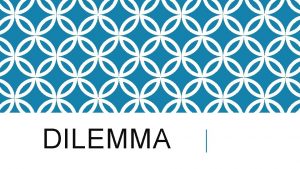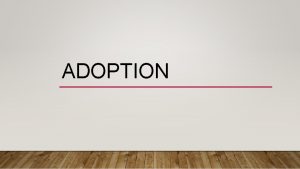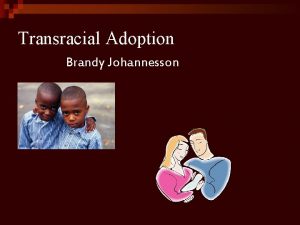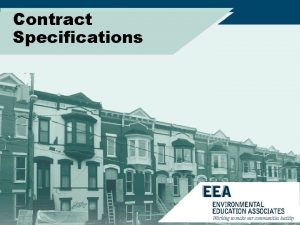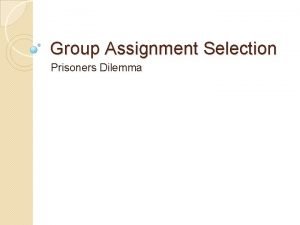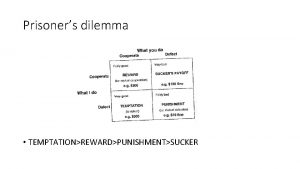Specifications vs Standards the adoption dilemma Standards come












- Slides: 12

Specifications vs Standards: the adoption dilemma "Standards come through adoption” D. Moldoff, Academy One (Rome workshop, Nov. 9 th 2007) Page 1 / 13

“all roads lead start from Rome” European workshop, 9 th November 2007 in Rome Defining standards and procedures for the exchange of student curriculum data between Higher Education Institutions § 40 participants from 13 countries § Rome Student Systems and Standards Group (R 3 SG) § Recommendations o Permanent Observatory o Delegation of Experts to CEN o Promote technical subgroups Page 2 / 13

… new kid on the block • Market attention § § Reports o PESC o Academy One o Gartner CEN (European Committee for Standardization) o MLO (Metadata for Learning Opportunity) o NWI (New Work Item) on European Learner Mobility Page 3 / 13

… The Road to Dublin • Actions on the Recommendations § Permanent Observatory o Report on MLO activities o 2° workshops § Delegation of experts to CEN o Done – 3 representatives o Bruxelles and Paris meeting § Promote Technical subgroups o Glossary (considered also at MLO level) o Business Cases – to be fed to MLO Page 4 / 13

Dublin Worshop Sharing Perspectives for the Rapid Development of Standards for Course Description and Curriculum Data 2 “standard” perspectives: Implementers i. e. R 3 SG Standardization authorities i. e. CEN Page 5 / 13

Building momentum European workshop, 25 th April 2008 in Dublin Sharing Perspectives for the Rapid Development of Standards for Course Description and Curriculum Data § 37 participants from 11 countries § 2 “standard” perspectives – implementers vs. standardization authorities § Business Cases: the need for standardization § Focus Areas o Graduation Documents (Diploma Supplement) o European Learner Mobility (EUROPASS) o Course Unit Description o Course equivalencies Page 6 / 13

The opportunities for standards Course Description Curriculum Description Academic Offer Validation Course Advertising Exchange Mobility Student Observatory Transfer Mobility Mediated Application Graduation Documents Course Unit Employment STUDY PROGRAMMES & COURSE UNITS CATALOGUE STUDY. . . . PROGRAMME. . . . DETAILS. . . COURSE. . . . UNIT. . . . DETAILS. . . . LEARNING AGREEMENT TRANSCRIPT. . . OF RECORDS. . . DIPLOMA. . . SUPPLEMENT. . . . . CURRICULUM. . . VITAE. . . . . . . . . . . . . . . Page 7 / 13

Business Cases Flow Academic Offer Validation Employme Course Advertising Mediated Application Course Unit Exchange Mobility Transfer Mobility Graduation Documents Page 8 / 13

Focus areas § European Learner Mobility § Security / authentication (identity and tamper-evidence) § Description of course units / unit catalogue § Curriculum versioning (snapshot) § Curriculum rules / Degree Structure / Pathway § Academic history of individual § Graduation documents (European Diploma Supplement and other) § Course equivalency/matching § Grading Scheme (how the grading scales and distribution are built Page 9 / 13

Principles agreed by the group 1. Manage diversity 2. Integrate and acknowledge existing activities by always checking other work first, i. e. don't reinvent where there has been work done elsewhere such as by PESC, CEN, ISO, HR-XML, IMS 3. Use pilot implementations and feedback from users to advance standards activity 4. Publicise the work of the group as possible with keynotes at major conferences 5. Generally use of pointers is better than transfer of data, where appropriate Page 10 / 13

Destination Stuttgart § “Growing pains” - from group to organization § Visibility and Proliferation of workshop results o EUNIS (RS 3 G mentioned in 4 presentation) o EAIE 2008 (Antwerp) – RS 3 G invited to host a workshop on Digital Student Data Portability at EAIE 2009 (Madrid) § CEN experts delegation o Active on MLO (standard in the making) o Expert pool for European Learners Mobiliyt o Adoption “scout” (PLOTEUS) § Euro AFI project (University of Stuttgart) § Liason with Terena, EUNIS, CEN, NEC (National Europass Centers) Page 11 / 13

Specifications vs Standards: the adoption dilemma "Standards come through adoption” D. Moldoff, Academy One (Rome workshop) Page 12 / 13
 Come rico come sano come pescado
Come rico come sano come pescado Come mi chiamo come mi chiamo
Come mi chiamo come mi chiamo Draw past tense and past participle
Draw past tense and past participle Softly and tenderly jesus is calling
Softly and tenderly jesus is calling Come holy spirit, come hymn
Come holy spirit, come hymn List simple past verbs
List simple past verbs Come come emmanuel son of god appear
Come come emmanuel son of god appear Come mi vedo io e come mi vedono gli altri
Come mi vedo io e come mi vedono gli altri He-y come on ou-t analysis
He-y come on ou-t analysis Come in come in and sit down
Come in come in and sit down Come mi chiamo io
Come mi chiamo io Get in touch with god turn your radio on
Get in touch with god turn your radio on Come thou fount come thou king lyrics
Come thou fount come thou king lyrics
